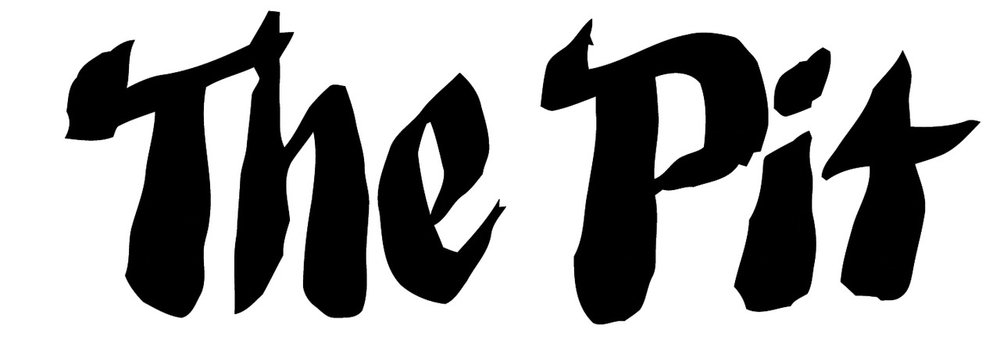You’re What this World Needs
Bella Foster
Bella Foster: You’re What this World Needs
September 24 - October 29, 2022
The Pit Palm Springs, CA
The Pit is pleased to present You’re What This World Needs, Bella Foster’s third solo exhibition with the gallery featuring new paintings that gleefully tease art out of collisions between visual grammar and considerations of objecthood. What makes a centerpiece? How are tiny things monumental? Private Investigator Foster sleuths this phenomenological arena, hard. Foster studies cohesion, recognizability, and domesticity by pursuing her fascinations with how visual simplicity becomes folkloric, iconographic, and sublime when humans put their paws on stuff.
Materialism with all its associations, from industrial design to esoterica, is essentialized and revered in these philosophical paintings. Truly, this artist can find perfection’s saggy baggage in just about anything. Give her a cluttered pile and she sorts it ninja-style into a coherent, appealing set of 2D peace offerings: chaos gets woven into pictures of a carefully ruffled textile, some cherished books, a gifted coffee mug, flowers from a good time garden visit. Her subject matter is not so much the accoutrements themselves, but the arousal of immanence, as she trains gubbins into paragons of awe.
Like artists in the Pattern and Decoration movement or even Lari Pittman, who Foster admires, Foster presents nostalgia at face value: it’s neither twee nor evil. Nostalgia used restoratively can be fabulously quaint — time to reclaim the Q word. Quaint in its original usage, relative of Old French cointe via Latin cognitus ‘ascertained,’ used to imply ‘wise, clever, ingenious, or cunningly devised.’ Quaintness, in other words, offers new perspective through wise or clever discovery. Doesn’t quaint resemble giant now: something badass. Warhol knew this well. The concept’s derision (minimization)and incorrect usage points towards the lazy heteronormative misogyny inherent to the histories of disempowerment and diminishment of healing connections humans intrinsically have towards all we share space with. Quaintness is located in epiphany — which typically requires significant anxiety to land. It’s a great thing. Is it safe to say that a radical feminist agenda is subtly embedded in what Foster calls her interests in “bittersweet consumerism.”
Still, semantics receive less attention than Foster’s seemingly pragmatic considerations of purpose, function, and personal connection to her chosen subjects. The paintings resemble still lifes but they reject the genre’s classism. For example, they aren’t illustrations of pre-staged treasures or symbolically codified tributes to exclusivity. They speak more as invitations into visionary interior milieu: conditions (not expressions of condition). Alchemically arranged sets of charismatic objects are “swapped in” as Foster says, to changeable arrays that operate, almost, like theater for the humble actors — statuary, office supply, a snack — that Foster directs to stardom. A melancholic, backstage glamour permeates it all; any formal efforts towards baroque effects inevitably (and interestingly) tax painting’s performance back into evidencing proletarian surroundings, or even further, wonky life off-canvas.
For further information, please contact the gallery at info@the-pit.la.
Bella Foster, You’re What this World Needs, 2022, Acrylic on canvas, 48 x 36 in.
Bella Foster, But Down the Road the Sun is Shining , 2022, Acrylic on canvas, 40 x 30 in.
Bella Foster, Studio Garden Matija Poppies , 2022, Acrylic on canvas, 20 x 16 in.
Bella Foster, Megan’s Sunflowers (Cary Leibowitz mug), 2022, Acrylic on canvas, 20 x 16 in.
Bella Foster, Jam Jar in the Studio, 2022, Acrylic on canvas, 24 x 18 in.
Bella Foster, Ahh Choo! In the studio (Cary Leibowitz mug), 2022, Acrylic on canvas, 40 x 30 in.
Bella Foster, Studio Garden Day Lilies, 2022, Acrylic on canvas, 20 x 16 in.
Bella Foster, Narcissus Pink Pride, 2022, Acrylic on canvas, 20 x 16 in.
Bella Foster, June 24th, in the studio, 2022, Acrylic on canvas, 24 x 18 in.
Bella Foster, That Song About the Midway in Lauren’s Window, 2022, Acrylic on canvas, 40 x 30 in.















